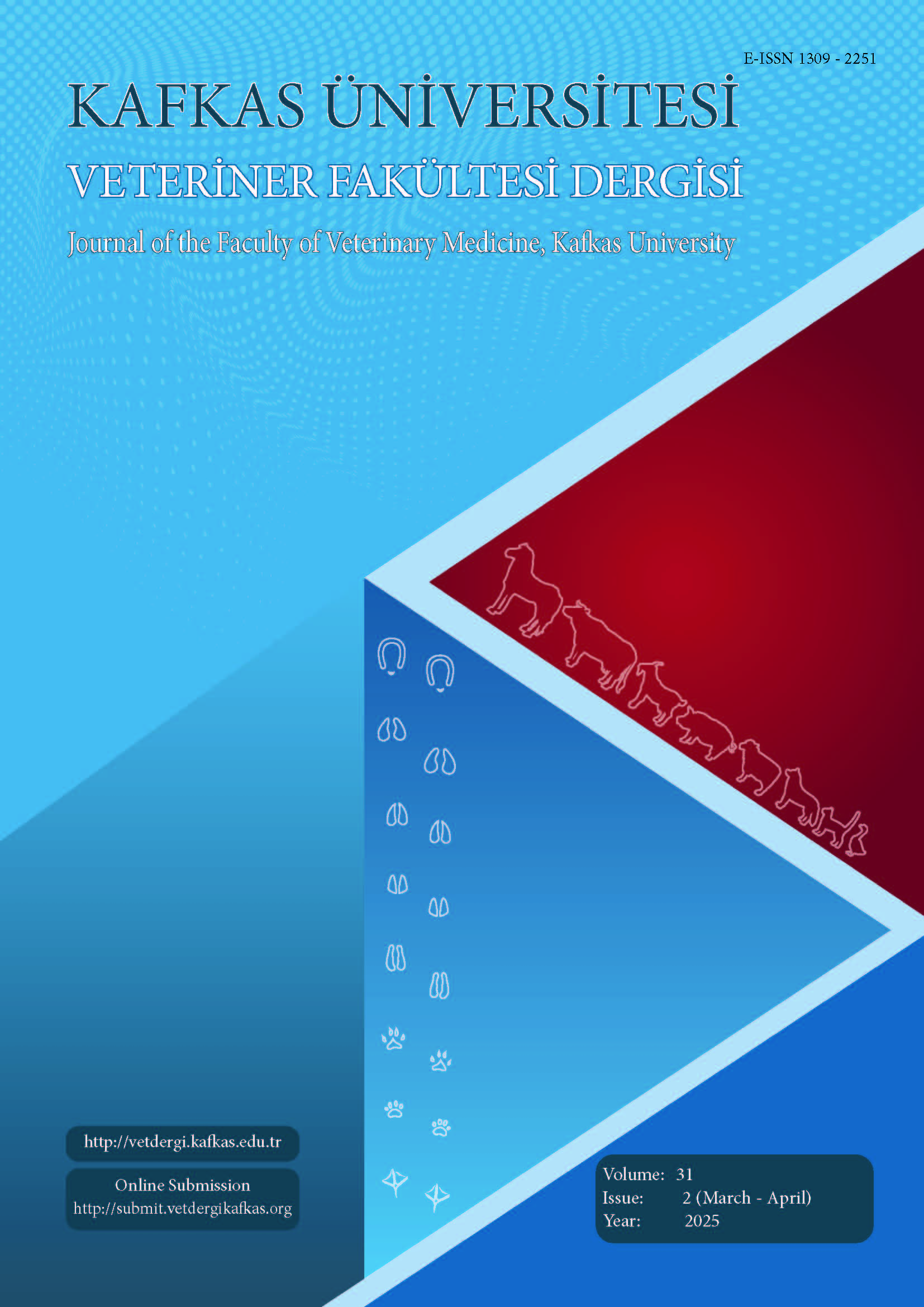
This journal is licensed under a Creative Commons Attribution-NonCommercial 4.0 International License
Kafkas Üniversitesi Veteriner Fakültesi Dergisi
2025 , Vol 31 , Issue 2
Efficacy of Pyocyanin Isolated from Pseudomonas aeruginosa and Lactobacillus plantarum Against Methicillin Resistant Staphylococcus aureus Caused Bovine Mastitis
1Ataturk University, Faculty of Veterinary Medicine, Department of Microbiology, TR-25240 Erzurum - TÜRKİYE2Ataturk University, Vaccine Application and Development Center, TR-25240 Erzurum - TÜRKİYE
3Ataturk University, Faculty of Medicine, Department of Medical Microbiology, TR-25240 Erzurum - TÜRKİYE
4Ataturk University, Faculty of Science, Department of Molecular Biology and Genetics, TR-25240 Erzurum - TÜRKİYE
5Erzurum Technical University, Faculty of Science, Department of Molecular Biology and Genetics, TR-25240 Erzurum - TÜRKİYE DOI : 10.9775/kvfd.2024.33429 Staphylococcus aureus is an important pathogen causing mastitis in dairy cows and methicillin-resistant Staphylococcus aureus (MRSA) is found on farms globally. The risk of foodborne zoonotic infection from bovine MRSA poses significant challenges to veterinary medicine. These challenges are compounded by limited treatment options, particularly non-beta-lactam antibiotics such as tetracyclines, fluoroquinolones, etc. Innovative treatment strategies aiming to replace antibiotics in mastitis management are being investigated. The activity of pyocyanin and Lactobacillus plantarum was evaluated by Kirby-Bauer disc diffusion method, minimum inhibitory concentration (MIC), minimum bactericidal concentration (MBC), antibiofilm activity and fractional inhibitory concentration method. Cytotoxic effects were also analyzed by infecting a cell line with MRSA. The results indicated that pyocyanin produced a 15 mm inhibition zone, while Lactobacillus plantarum yielded a 10 mm zone; their combination resulted in an 18 mm zone, suggesting a synergistic effect. The MIC values were determined to be 64 μg/mL for pyocyanin and 128 μg/mL for Lactobacillus plantarum, both requiring an MBC of 512 μg/mL. Furthermore, pyocyanin exhibited a 58.6% antibiofilm effect, whereas Lactobacillus plantarum demonstrated a 50.3% effect. Gene expression analysis revealed that Lactobacillus plantarum was more effective in reducing MRSA DNA levels, underscoring its potential for use in combination therapy against MRSA infections. Keywords : Lactobacillus plantarum, Mastitis, Pyocyanin, Pseudomonas aeruginosa










